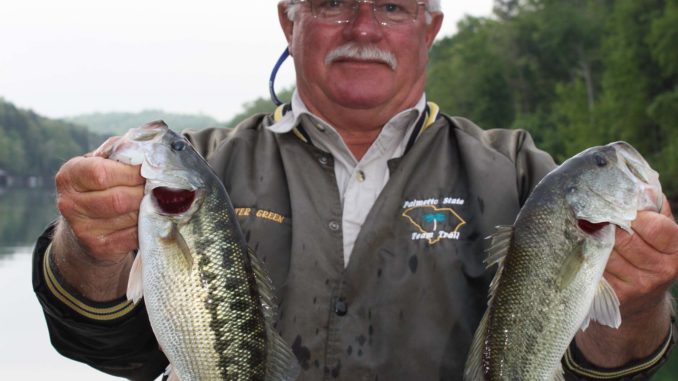
Famous for its fat spotted bass, this steep-banked Upstate impoundment also produces fine largemouth action — along with crappie, native redeye bass and the occasional smallmouth.
The good news about Lake Keowee is that it isn’t terribly huge, with waters that cover a little more than 18,000 acres. That modest size can help shorten the fish-finding process, especially when fish are as plentiful as they are at Keowee.
The bad news is that Keowee certainly ranks as one of the most complex lakes in South Carolina.
Separate dams that impound two different river arms make it almost like two lakes in one, and the Oconee Nuclear Station complicates things further by pulling water from one side and pushing temperature-altered water into the other side.
Lake Keowee is also steep and deep, and its waters generally stay quite clear, all contributing to fish that can be fussy and challenging to pinpoint.
Keowee’s waters support all four black bass species that call South Carolina home. Non-native spotted bass predominate, but largemouths are also quite plentiful. Smallmouth and redeye bass, although less numerous, can be caught in certain areas.
Beyond black bass, varieties of fish that get significant attention from anglers include crappie, catfish and bluegill.
Buster Green understands Lake Keowee’s complexities. A guide with more than 30 years of experience, Green has been fishing the lake since it was a fairly new impoundment, and he has watched its fisheries and patterns evolve.
Years of experience provide major value at Keowee in June. Although the fish will attack topwater baits and the action can be outstanding, most bass have moved away from the obvious shallow spots and have begun relating to structural features.
Green shared some of his vast experience by hand-picking 10 spots that offer especially good prospects for early-summer fishing at Lake Keowee.
1 Jocassee Dam
34 57 408 N/82 54 804 W
Beginning at the extreme upper end of Lake Keowee, cool water pulled from the depths of Lake Jocassee, sometimes-strong currents, well-defined eddies, plentiful cover and normally abundant baitfish combine to give bass everything they could ever want below Jocassee Dam.
“Probably close to 50 percent of the tournaments are won right here,” Green said. “It’s an all-or-nothing spot, though, and sometimes they don’t bite at all.”
Green points toward the large eddy that forms just to the right of the dam (facing the dam) and the cove on the opposite side as good places to look for schooling fish.
He’ll also work riprap on both sides, the point that’s in front of the dam and blow-downs along the banks just down from the direct outflow.
Topwater lures almost always get Green’s first nod below the dam, but he’ll also keep handy a shakey-head rig and a dropshot during the summer.
2 SC 11 Bridge
34 55 179 N/82 54 450 W
Not far down the Keowee River from the dam, the lake’s main body squeezes beneath the SC 11 bridge, and the combination of the funnel effect, plentiful shade and the structure provided by the bridge pilings attracts plenty of fish.
“The bridge pilings hold bait, and bait attracts bass, especially spotted bass,” Green said. “I’ll fish each piling, often with a worm. The river channel runs to the west, and sometimes the fish will be along the break or by the deeper pilings.”
The bridge also attracts schools of crappie and is a popular spot for crappie fishing. During the summer, anglers often show up a little before dark and fish at night, shining lights on the water right next to a piling and fishing in the lit water with jigs or minnows.
3 Cedar Creek
34 54 298 N/82 53 756 W
“There’s a school of fish here year round,” Green said, describing Cedar Creek, a small tributary that has two forks. “A lot of smallmouths live in Cedar Creek, but you can also catch largemouths by going up it.”
Close to its mouth, Cedar Creek makes a hard bend, narrows significantly and wraps around an island —collectively providing great habitat for bass.
Green especially likes the deep water along the outside bend for spotted bass and smallmouths.
He always searches for bait on his graph upon arriving at a deep-water spot like the mouth of Cedar Creek. He has found the bass to be mobile, following the baitfish, so if he doesn’t find bait he usually won’t fish – at least not for very long. If he does find bait, he’ll usually start by dropping a jigging spoon to the level of the bait.
4 Cowee Branch
34 50 899 N/82 54 589 W
Local fishermen have planted dozens of brush piles throughout Cowee Branch, and that brush continues to be replenished.
An angler who drags a Carolina rig across the bottom in this area usually will find a fair number of snags, but that same angler is likely to find some bass in the process.
Lake Keowee’s crappie also make regular use of the abundant cover, meaning Cowee Creek is a fine place to drift or troll with minnows or jigs set to run just over the tops of the brush.
For bass, Green especially likes the area underneath the power lines that cross the creek.
“That’s always a good tip for Lake Keowee,” Green said. “I don’t know why it is true, but everywhere power lines cross this lake, there is a school of fish that stays in that area.”
Green likes to work the brush with a watermelon/red flake worm. Any shade of green will work well at times on Lake Keowee, but watermelon/red flake is his No. 1 pick.
5 The Hot Hole
34 47 848 N/82 53 742 W
This whole story is about hot holes of sorts, but in this case it’s a literal reference. The Hot Hole, where warmer water gets discharged from the Oconee Nuclear Station, produces such dependable action and has the potential to create so much crowding that it is off limits in many local tournaments.
That said, the Hot Hole stands out as a great destination for any angler who is not already familiar with Lake Keowee or who simply hopes to tap into some fun fishing action.
Although best known as a winter spot because of the warmth of the discharge, this areas holds high numbers of fish year round because of the current, and the abundant structure and cover.
Green said that, while current from the power-station discharge influences a fairly large area down the riprap bank on one side and spreads into a big cove on the other, most anglers only fish the immediate discharge.
Directly downcurrent from the discharge, paying careful attention to electronics can pay big dividends. Fish commonly concentrate on top of or just behind a sandbar that has formed just down from a washout hole, and relatively few anglers really target the sandbar.
The good thing about the Hot Hole is that it always holds bass. The bad part is that always-abundant natural forage and heavy pressure can make those fish tough customers.
Natural baitfish imitation presentations and persistence can both be important.
6 Skimmer Wall
34 47 110 N/82 54 793 W
Just around the corner from the Hot Hole, a long concrete barrier known as the Skimmer Wall serves as a giant filter at the mouth of the canal that draws water for cooling purposes within the nuclear station.
Again, current plays a big part in the fish-attracting equation, drawing concentrations of baitfish and keeping the bass in ambush mode. Water actually passes under the wall to enter the canal, so the strongest currents and consequently the most-active fish tend to be close to the bottom.
“You can catch a lot of fish some days by just working back and forth along the Skimmer Wall,” Green said. “I like to use a jigging spoon or a dropshot rig. The fish might be on the bottom, or they might be suspended.”
The Skimmer Wall area also stays well lighted all night, which keeps baitfish in the area and makes it a very good area for night-fishing during the summer.
7 The Power Lines
34 46 364 N/82 55 627 W
As noted previously, power lines cross Lake Keowee in a few places, and each crossing can be a hot spot at times. However, when local anglers talk about the Power Lines, they typically are referring to the high set of lines that crosses the lake’s main body near the mouth of Von Hollen Creek.
“It’s very deep around there,” Green said. “You have 100 feet of water only 100 feet out from a major point. Along with that point and a couple of others, you have islands and a few different creeks coming together.”
Green fishes the tops and sides of the points, and will work around the islands with topwater lures, jigging spoons and a variety of soft-plastic offerings.
Because Keowee fish follow schools of herring and shad and commonly suspend over open-water structure — and because of the lake’s normal clarity — topwater lures can work over any depth. In the vicinity of the Power Lines, it’s not uncommon to have fish suspended 20 or 30 feet deep over close to 100 feet of water that will readily attack surface lures.
8 Little River Dike
34 43 784 N/82 54 740 W
The dike that impounds Lake Keowee’s Little River arm ranks as one of Green’s favorite early-summer areas, especially in the morning.
He’ll typically start a morning throwing surface lures and then turn to a crankbait, which he will bounce off the riprap that runs the length of the dike.
Blueback herring spawn around the rocks, primarily during May, and they typically stay in the vicinity of the dike during early summer.
Crawfish also make heavy use of the riprap, so bass always have plenty to eat around the rocks.
Crappie also like to hang around the riprap, which serves the double function of providing an added opportunity for fishermen and one more menu item for bass.
“The bass will school up and down the wall, so keep an eye out for breaking bass, and keep a topwater lure and jerkbait handy,” Green said.
9 Island 2B
34 43 884 N/82 56 035 W
A shallow shoal on the river-channel side of Island 2B and a broad flat that stretches out toward the channel attract quite a few schooling fish during the summer.
Green will cruise slowly along on the flat and watch for breaking fish.
At the edge of the flat, the bottom drops sharply into the river channel, creating an outstanding holding area for June bass.
“It’s an excellent place for a jigging spoon such as a Mann-O-Lure,” Green said.
Depending on where he marks bait and bass, Green might jig his spoon right at the bottom or suspended in the water column.
A dropshot rig offers another very good option for fish holding along the channel break.
10 The Pond (Webb Lake)
34 42 718 N/82 56 399 W
Finally, Green pointed toward “The Pond,” as inundated Webb Lake is best known by Keowee anglers.
“When it’s right, it’s the sort of spot where whoever can get to it first in a tournament wins,” Green said.
An old pond that was covered when the lake was built and lies hidden within a dock-lined cove, Webb Lake offers outstanding structure, especially around its dam. The old dam itself is less than 20 feet beneath the surface, but adjacent waters are more than 50 feet deep.
Green typically will work the drop with a jigging spoon. He’ll also work the rest of the inundated pond by dragging a jigging spoon across its contours.
“You can catch fish in all parts of the pond,” he said.
Guide Buster Green can be contacted at (864) 277-2463 or www.palmettostateteamtrail.com.

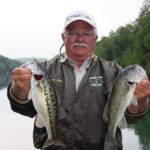
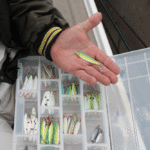
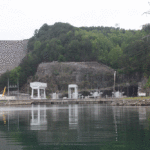
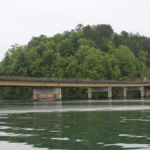
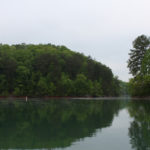
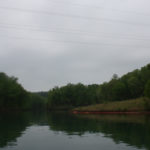
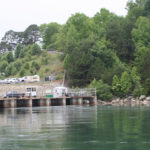
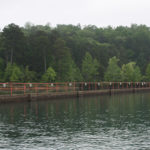
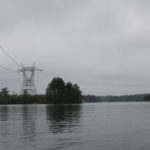
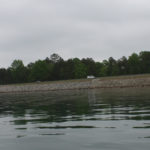
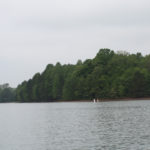
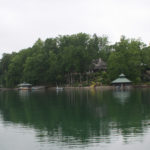
1 Trackback / Pingback